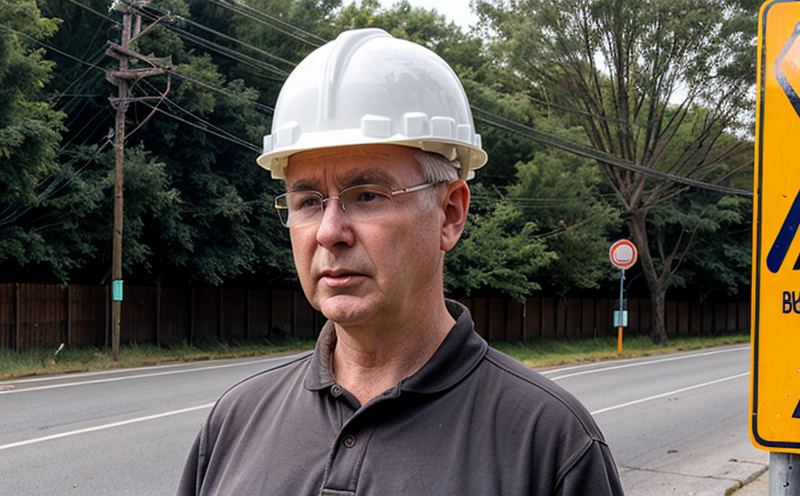ANSI S12.18 Measurement of Noise Emission from Heavy Vehicles
The ANSI S12.18 standard is a comprehensive guideline designed to measure noise emissions from heavy vehicles, including trucks, buses, and other similar commercial vehicles. This standard ensures that noise levels are within acceptable limits as per regulatory requirements, thus safeguarding public health and maintaining community harmony.
Developed by the American National Standards Institute (ANSI), S12.18 focuses on quantifying sound pressure levels at specific distances from the vehicle in a controlled environment. The standard provides detailed procedures for setting up test conditions, conducting measurements, and interpreting results. It is widely recognized for its scientific rigor and practical applicability.
The ANSI S12.18 methodology involves placing the heavy vehicle on a specially designed noise testing platform where it can operate under simulated driving conditions. Sound level meters are positioned at predetermined distances to capture sound pressure levels. The standard specifies the exact placement of these meters, the type of microphones required, and the frequency ranges over which measurements must be taken.
Compliance with ANSI S12.18 is crucial for manufacturers as it not only ensures that their vehicles meet legal requirements but also enhances brand reputation by demonstrating a commitment to environmental responsibility. Non-compliance can lead to penalties, product recalls, and reputational damage, making compliance a strategic necessity.
The standard’s scope extends beyond just the vehicle itself; it also addresses the impact of noise emissions on surrounding areas. By measuring sound levels at various distances from the vehicle, engineers gain insights into how far-reaching these emissions are. This information is invaluable for urban planning and infrastructure design to mitigate potential adverse effects.
For manufacturers, compliance with ANSI S12.18 involves rigorous testing protocols that simulate real-world driving conditions. These tests ensure that the vehicles meet noise emission standards under controlled lab settings before being introduced into public use. The test procedures outlined in ANSI S12.18 provide a standardized approach to measurement, allowing for consistent and reliable data across different manufacturers.
Understanding the impact of noise pollution from heavy vehicles is vital for both regulatory compliance and environmental responsibility. By adhering to ANSI S12.18, organizations can contribute positively to public health and quality of life in communities where these vehicles operate frequently.
Why It Matters
The measurement of noise emissions from heavy vehicles is critical for several reasons:
- Ensures compliance with regulatory standards set by governmental bodies like the EPA and OSHA in the U.S.
- Protects public health by minimizing exposure to excessive noise levels, which can lead to hearing damage and stress.
- Maintains community harmony by reducing noise pollution in residential areas and urban environments.
Compliance with ANSI S12.18 is not just a legal requirement but also a testament to a company’s commitment to sustainability and environmental responsibility. It helps build trust among customers, regulatory bodies, and the general public.
The standard plays a crucial role in reducing noise pollution from heavy vehicles, thereby contributing to healthier living conditions for all. By adhering to these stringent testing protocols, manufacturers can ensure that their products meet or exceed international standards, enhancing both brand reputation and market competitiveness.
Industry Applications
| Application | Description |
|---|---|
| Manufacturing | Ensures that newly designed heavy vehicles meet ANSI S12.18 noise emission standards before mass production. |
| R&D | Supports research and development efforts aimed at improving the acoustic performance of heavy vehicles. |
| Environmental Consulting | Assists in assessing the environmental impact of noise pollution from heavy vehicle operations. |
| Regulatory Compliance | Helps organizations comply with local, state, and national regulations regarding noise emissions. |
The ANSI S12.18 standard is widely applicable across various sectors including manufacturing, R&D, environmental consulting, and regulatory compliance. It ensures that heavy vehicles meet stringent noise emission standards, thereby protecting public health and maintaining community harmony.
International Acceptance and Recognition
- The ANSI S12.18 standard is accepted globally by numerous countries for measuring the noise emissions of heavy vehicles.
- It aligns with international standards such as ISO 18450, which provides a framework for assessing sound pressure levels from road vehicles.
The widespread acceptance and recognition of ANSI S12.18 underscore its importance in maintaining consistent and reliable noise measurement practices worldwide. By adhering to this standard, manufacturers can ensure that their products meet international standards, thereby facilitating easier trade and compliance across different jurisdictions.
Many countries have adopted ANSI S12.18 as a local standard or reference document for measuring noise emissions from heavy vehicles. This global acceptance ensures consistency in testing protocols and results, fostering trust among stakeholders and regulatory bodies.





